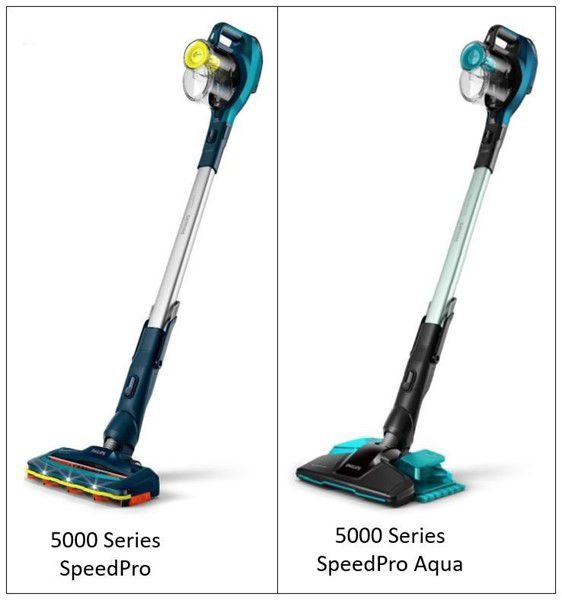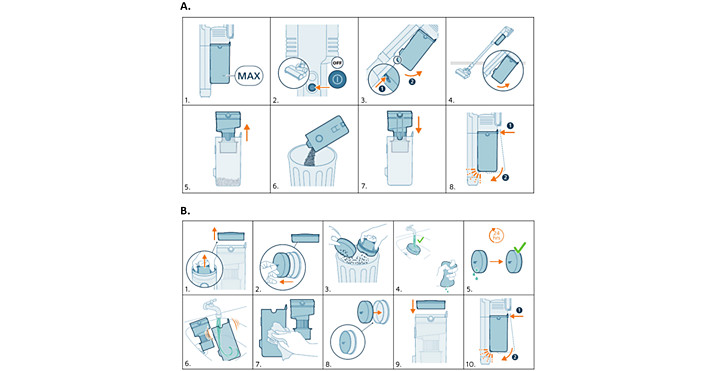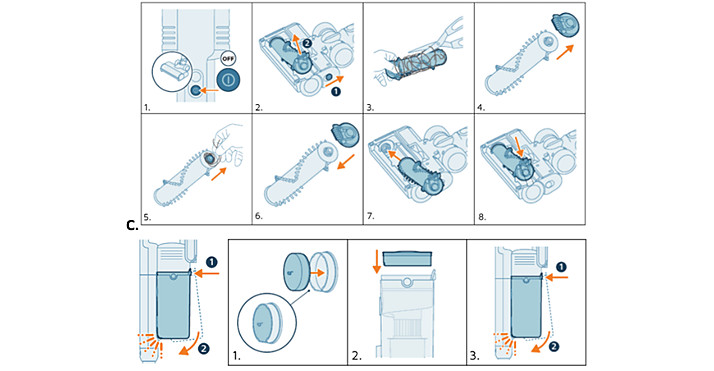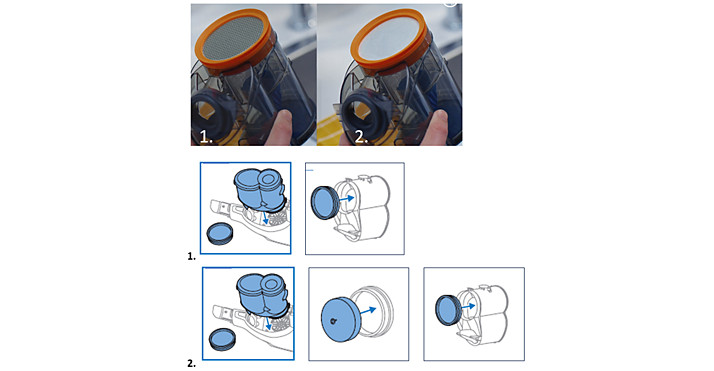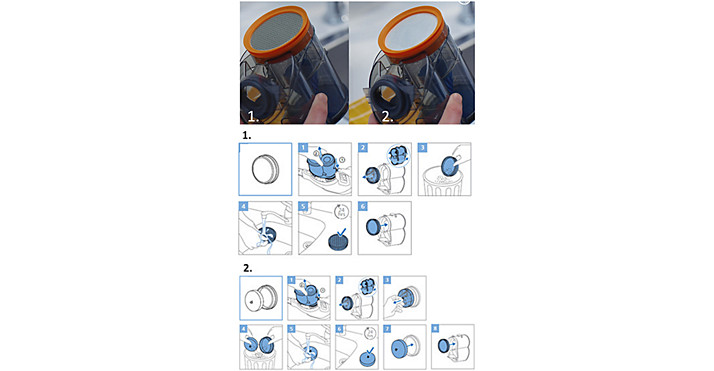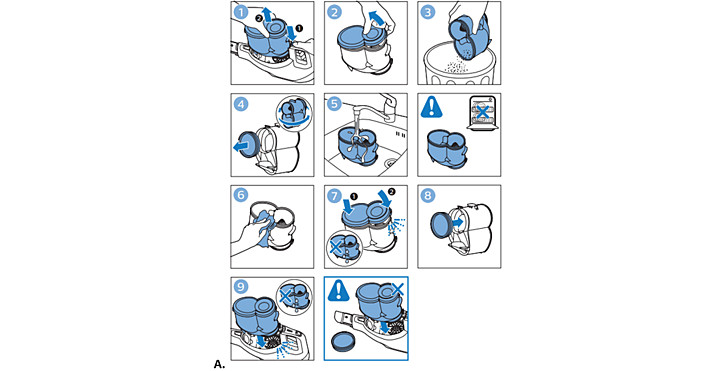If you notice a decrease in suction power, it could be due to a dirty cyclone (the colored part in the dust bucket) or filter. Follow these instructions to clean both parts:
Dust bucket/cyclone
It is important to empty the dust bucket of your Philips cordless vacuum cleaner after each use or when the dust reaches the MAX level indicator. Follow these simple steps to clean the dust bucket:
- Turn off the appliance (image A2).
- Hold the appliance at a 45-degree angle as shown in image A3. Remove the dust bucket by pressing the release button, located at the bottom of the bucket.
- Hold the two blue dented circles on the side of the colored part and lift it out of the dust bucket (image A5).
- Empty the collected dust in the dust bucket over the trash bin (image A6). Also, make sure objects, hair, and dirt stuck in the cyclone are removed.
- Place the cyclone back in the dust bucket and make sure the two parts are aligned (image A7).
- Place back the bucket by first aligning the filter side of the bucket before hinging it in place (image A8).
Filter
To keep your Philips Cordless Vacuum Cleaner performing at its best, make sure to clean the filter regularly. Follow these simple steps:
- Lift the filter to remove it from the dust bucket (image B1).
- Separate the washable foam filter from the plastic filter case (image B2).
- Tap the foam filter and the filter case over a trash bin to clean (image B3). To thoroughly clean the filter case, it helps if you tap it very firmly over a trash bin until no more dust is coming out of the filter case.
- Rinse the foam under the tap and squeeze it until clean water comes out (image B4). Remember not to rinse the filter case. Note: for the best cleaning result, run the water through the filter with the dirtier side facing downwards, allowing deeply set dust to be washed out.
- Wait 24 hours until the foam filter is fully dried (image B5). Note: do not dry the sponge filter in direct sunlight, on the radiator, or in the tumble dryer.
- For thorough maintenance, clean the dust bucket and colored parts under a running tap or in warm soapy water (image 6) and wipe them dry (image B8).
- Reassemble the parts (images B7-10). When you place back the dust bucket first align the filter side before hinging it in place (image 10). Note: for optimal performance, we recommend cleaning the filter of your vacuum cleaner monthly and replacing the filter every six months (Accessory XV1651).
The dust bucket is not attached properly to the appliance
If the dust bucket is not attached properly, this can cause problems with suction power. Make sure the dust bucket is attached properly by first aligning the filter side before hinging it in place.
A foreign object is stuck in the nozzle
If a foreign object is stuck in your appliance, this can cause problems with suction power. Make sure the appliance is switched off (image C1). Clean the nozzle by removing the tube from the main appliance and check if something is stuck in the tube and the part of the nozzle that was connected to the tube. If you find no blockages, follow the instructions below to clean the nozzle and brush:
- Hold the button on the side of the nozzle with one hand while removing the brush with the other hand. (image C2).
- Remove all visible pollution by hand. Cut and remove any tangled hairs from the brush (image C3).
- Remove the side cap (image C4) and remove hairs in between (image C5).
- Insert the brush back in place, and your vacuum is ready to use (images C6-8). When reassembling the brush, ensure proper alignment by first placing one side in position before clicking on the other side.
The filter is not present in the appliance.
If the filter is not present in the appliance, this can cause problems with suction power. Please make sure that the filter is in the appliance and assembled correctly. When you connect the dust bucket to the appliance it’s important to first align the filter side of the bucket before hinging it in place (image D).
The appliance is rotated or flipped when the power is off.
If the filter is not present in the appliance, this can cause problems with suction power. Please make sure that the filter is in
If you have checked the above and the appliance still has a lower suction power than usual, please take it to a Philips service center or contact us for further assistance at www.philips.com/support.
